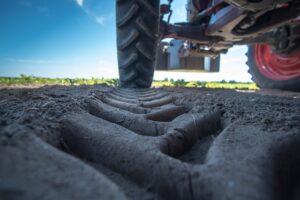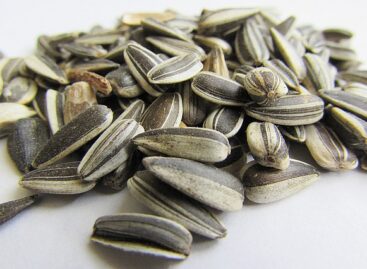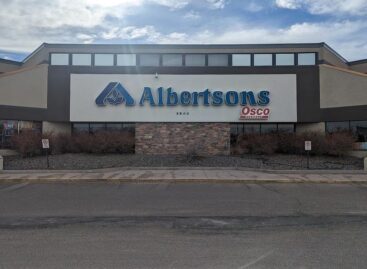Favorable changes in the 2023 rules for direct grants
Based on the experiences of the first weeks of the period open for the submission of a single application, without prejudice to the provisions of the Strategic Plan of the Hungarian CAP, several amendments – favorable to farmers – will be made in this year’s legislation on direct subsidies.

(Photo: Pixabay)
The soon-to-be-released amendments will be developed in such a way that, on the one hand, they do not make it necessary for farmers to amend the already submitted uniform applications, yet they significantly facilitate the fulfillment of the commitments contained in the individual support titles.
Clarifications will be made with regard to certain regulations regarding re-sowing, the agro-ecological program, arable land with a slope of more than 12% and mulching, as follows:
Regarding second seeding:
– The notification of re-sowing is simplified, because re-sowings not planned in the unified application, but deemed necessary by the farmers, can also be notified within the 15-day deadline for the notification of re-sowings, by September 29 at the latest.
– The concept of “second sowing” is clarified, it is enough to separate the plant cultures according to the same rules (i.e. at the genus level) in the second sowings, as required by the rules of the general crop rotation – i.e. the separation at the plant family level does not have to be applied. Thanks to this, the producers have much more room for maneuver in shaping the species composition of the second sowings. This is also beneficial for applications that have already been submitted, since the actual re-sowing will take place in July of the current year or later.
– At the same time, the plant cultures of some species cannot follow each other even in a mixture: rapeseed (Brassica napus), mustard (Sinapis alba) and radishes (Raphanus sativus).
– If, for reasons of technology or plant organization, a re-sowing is not carried out there and not in the size as originally planned by the producer, then it is possible to take into account re-sowings that take place elsewhere, at a different size, so a re-sowing larger than originally planned is also acceptable. Of course, other rules regarding data changes, which prohibit changes to the application to increase the subsidy, still apply.
Regarding the Agro-ecology Program:
– After the application submission period, the Territorial Monitoring System (TMR) can identify that on one or more fields there is a crop belonging to a different land use category than that specified by the farmer in his unified application. As a result of a correction in this direction, it may arise that in the Agro-Ecological Program (AÖP) an additional agrotechnical operation must be planned and implemented for the land use category established in this way. Thanks to the amendment of the legislation, such data changes will also be possible after the application has been submitted, on the interface of the unified application.
– It is also possible for an already undertaken AÖP exercise to be expanded with additional areas already announced in the unified application.
– In the framework of the AÖP exercise aimed at the environmentally friendly application of urea-containing fertilizer, it is clarified that when calculating the 35-90 kg of nitrogen active ingredient, only those products that contain urea should be taken into account, but the total nitrogen active ingredient content should be taken into account. This is beneficial for the producers because they will presumably make fewer mistakes when fulfilling the commitment, and they will not apply unnecessary amounts of nitrogen.
– Among the rules of the AÖP practice for the grazing of grasslands, the length of the grazing period is clarified, which will now be shortened until October 30 in line with the Natura 2000 land use rules. On the other hand, it is clarified that the practice must be completed and checked separately for each lawn use category (Natura 2000 lawn and other lawn). In the same place, in the rules of intermittent grazing, it is specified that the animals that can be grazed in one area can simultaneously occupy 50% of the grassland area put into practice.
Regarding arable land with a slope of over 12%:
– With regard to the erosion protection strip or strips created within the field on arable land with a slope of more than 12%, it is clarified that the physical size rules for these strips apply absolutely only when the producer does not use any other erosion protection solution in the area. It is also clarified that the maximum distance of 100 meters within the board should not be understood rigidly, but as an average. Thus, it becomes clear that lanes with a more varied location that adapt to the real topographical conditions can also be perceived.
In terms of soil cover rules HMKÁ6 and AÖP:
– Based on the HMKÁ6 ground cover regulation to be clarified, not only stubble, but living plants also satisfies the ground cover requirement. The amendment thus clarifies the agronomic fact that a live plant present in the area at least until September 30 provides at least as effective soil cover as stubble maintained until September 30.
– In the field mulching practice of the AÖP, it is clarified that after harvesting the crop that falls in the summer, the remaining stubble also provides adequate mulching. For this reason, the 15-day period, before the end of which the new soil cover method (e.g. autumn sowing) must be established, only begins when the stubble is eradicated.
– The rules for additional support available to young farmers are supplemented as follows:
The amendment of the law allows the time spent in the family farm before 2021 to be included in the required professional practice time.
It is also possible for agricultural qualifications not listed in Annex 1 of the Decree to be accepted, if they can be considered at least equivalent to one of the qualifications listed in Annex 1.
On the kap.mnvh.eu website, the “Frequently Asked Questions” arising in connection with the new support system are updated on a weekly basis, with the aim that those concerned can find useful information that helps them interpret the legislation.
AM
Related news
The Ministry of Agriculture has issued a notice on the use of ENAR data in support policy
In the case of animal-based subsidies financed from EU funds,…
Read more >Farmer-centric agricultural policy after 2027 receives unanimous support
The EU member states’ agriculture ministers have adopted Council conclusions…
Read more >Slow but steady growth in sunflower producer prices
Oil World experts expect a global sunflower seed harvest of…
Read more >Related news
Co-op uses AI to fight GBP 40m losses in the UK
British supermarket chain Co-op is using AI technology to detect…
Read more >Plant-based brands risk losing consumer interest, says Flora exec
Flora Food Group marketing director Ian Hepburn has warned that…
Read more >Albertsons Terminates Merger With Kroger
Albertsons has terminated its $25-billion (€23.7 billion) merger agreement with Kroger after…
Read more >








